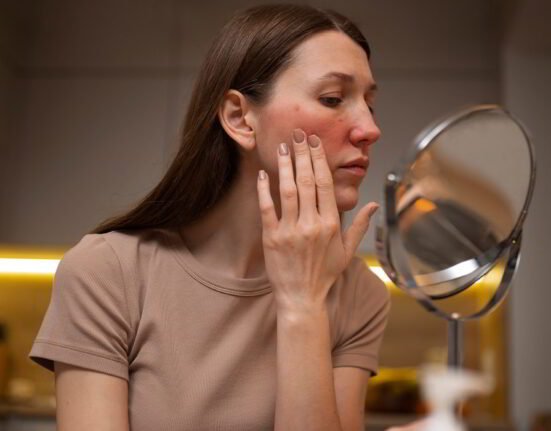Post-traumatic stress disorder, or PTSD, is a psychiatric condition that occurs in people who have experienced or witnessed traumatic events such as the death of loved ones, serious accidents, natural disasters, terrorist acts, wars, violence, sexual assault, etc. People who have been through such incidents have disturbing thoughts and feelings related to their experience that last long after the traumatic event has ended. They may get flashbacks or nightmares of those events and may feel sad or fearful when talking about that particular situation or event and, they usually remain upset all the time even when doing any day-to-day tasks. They don’t like to interact with others as well.
Who gets PTSD?
Anyone can develop PTSD. It doesn’t require any age or gender. Anyone can experience or witness sexual or physical abuse, the death of a loved one, natural disasters, wars, serious accidents, or any other traumatic event. Sometimes when we learn from a friend or a family member experienced a traumatic event that can also cause PTSD. Women are more likely vulnerable to develop Post-traumatic stress disorder than men. Biological factors also contribute to the development of PTSD.
Signs and Symptoms of PTSD
Symptoms of Post-traumatic stress disorder may start earlier or within months of a traumatic event, but sometimes symptoms may not appear until years after the event. Symptoms cause many problems in interactions, daily work, and in relationships. Generally, symptoms of PTSD are of four types:
- Intrusive memories: A person with PTSD may experience unwanted distressing memories of traumatic events. They may get flashbacks or nightmares of past events. They may also experience severe emotional distress that reminds them of the traumatic event.
- Avoidance: A person with PTSD usually avoids thinking or talking about the places, people, and activities that remind them of the traumatic event.
- Negative changes in thinking and mood: A person may have negative feelings about the world or other people. They may feel hopeless about the future. PTSD people have difficulty in maintaining close relationships. They may feel detached from family and friends. They are emotionally numb and don’t show interest in day-to-day activities.
DIAGNOSIS
To diagnose Post-traumatic stress disorder requires exposure to an event that involves the actual trauma like threat of death, violence, wars, serious accidents, disasters, etc. Exposure can happen in different ways. One can directly experience the traumatic event or witness the traumatic event occurring to others. If the problems one experiences after this exposure continue for more than a month and cause significant problems in work settings or relationships, then, a person is diagnosed with post-traumatic stress disorder.

The mental health professional usually performs a physical examination of a client to check for medical problems that may cause these symptoms. Then, it involves a psychological discussion with a client, and professionals use the criteria mentioned in the Diagnostic and Statistical Manual of Mental Disorders (DSM-5) published by the American Psychiatric Association for further treatment. Counseling sessions are given to a client and in some cases, medications are also provided for better treatment.
Treatment:
The primary treatment for Post-traumatic stress disorder is psychotherapy provided by licensed mental health professionals but medication is also given in some cases.
Psychotherapy:
Psychotherapy is also known as talk therapy and is used widely to treat children and adults with PTSD. It includes
- Cognitive therapy: This therapy helps a client to recognize ways of thinking that keep them stuck in one place like negative and false beliefs and the risk of traumatic things happening again. The professionals often use this therapy along with exposure therapy.
- Exposure therapy: This therapy helps an individual to face situations and memories that are traumatic and frightening. This therapy can be very helpful for flashbacks and nightmares.
- Eye movement desensitization and reprocessing: It combines exposure therapy with a series of guided eye movements that help an individual to process traumatic memories and change how he /she reacts to them.
Apart from these therapies, Mental health professionals provide individual and group therapies as well. They also help their clients develop stress management skills in order to handle stressful situations and cope with stress in life.
Medications:
Medications are also helpful to many people. They also improve symptoms
- Antidepressants: These help to improve the symptoms of depression and anxiety. They can also help improve sleep problems and concentration.
- Anti-anxiety medications: These drugs relieve severe anxiety-related problems.
Apart from treatment, support should be given to people diagnosed with PTSD. There are many support groups and veterans organizations in society that help people with different needs. People diagnosed with post-traumatic disorder must get enough rest, eat a healthy diet, exercise and take time to relax, try to reduce the use of caffeine and nicotine as these products worsen anxiety.
Link with Alzheimer’s Disease
An individual with PTSD should have the knowledge about the same as it helps to develop coping strategies and help to respond effectively. The treatment for such disorder may take time for healing but it is also effective for many people. One should follow the treatment plan and communication with mental health professional always help to move forward. Also, they should spend time with caring and loving people- family, friends, faith leaders, and others.
As we see the current research on PTSD, researchers concluded that it showed strong associations with Alzheimer’s Disease. Researchers are currently working on this and learning more about how traumatic events may physically change our brains.
Some famous books to read about PTSD:
- The Body Keeps the Score: Brain, Mind, and Body in the Healing of Trauma
- The PTSD Workbook, 3rd Edition
- Struggle Well: Thriving in the Aftermath of Trauma













Leave feedback about this